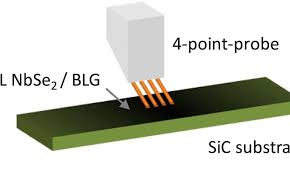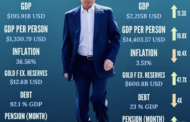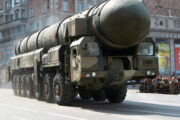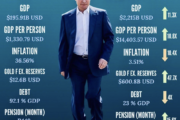Here Dr Tomaz Slivnik describes for Freenations the imminent threat to the entire western economy (and military) of a potential Chinese takeover of Taiwan whose semiconductor manufacturing is so dominant in our computing capacity. The abject incompetence of China-appeasing left corporatist Governments in the UK (Major, Blair, Cameron, May) and the USA (Clinton, Obama) have deliberately encouraged Chinese industrial infiltration, boosting their export earnings and giving them the wealth to dominate critical areas of computer and industrial technology. The final step would be the invasion of Taiwan.
For several years Freenations has been warning that China, not Russia was the greatest threat to western democracies and industries. https://freenations.net/china-the-danger-not-russia/ The attacks on Christianity and democracy, the military occupation of the Spratly islands in the South China Sea (taking other countries’ territorial waters) an old fashioned imperial industrial move into Africa, unequal trading practices, the well documented theft of western technology and the use of Chinese “students” and researchers to steal valuable research from western academics (and even conduct political attacks on students from Hong Kong in our Universities) – all orchestrated by the world’s most powerful communist party in Beijing. The Appeasement of this power is prominent even among conservative media (like Jeremy Warner in The Daily Telegraph). At least in the last few days the US Secretary of State Mike Pompeo has offered to build the British 5G and nuclear plants due to be completed by China. Will Johnson accept these offers? https://www.telegraph.co.uk/politics/2020/06/10/us-offers-build-uks-5g-nuclear-stations-end-coercive-relationship/
And Dr Slivnik has noted the planned Taiwan Semi Conductor Manufacturing Company’s opening of a factory in Arizona costing some $12bn. Since the publication of this article the New York Times has further reported: https://www.nytimes.com/2020/05/14/technology/trump-tsmc-us-chip-facility.html
Dr Tomaz Slivnik:
While it could be that China could not defeat the USA in a kinetic war at the moment, and waging kinetic war against a nuclear power would in any event be a risky proposition, the world appears not to have appreciated yet the strategic significance of Taiwan to the world economy and how vulnerable we are to China taking over Taiwan one way or another – be it through a sudden invasion, the subversion of their leadership, or otherwise.
The timing of the virus outbreak was very convenient for China for many reasons, one of which was that the Hong Kong protests would have to stop. We also said that we would not want to be Taiwan at the moment. China has already effectively annexed Hong Kong. Are the Spratly Islands and Taiwan China’s Czechoslovakia and Poland?
Most semiconductor devices are manufactured in Taiwan, specifically at TSMC (the “Taiwan Semiconductor Manufacturing Company”). Inter alia, TSMC currently manufactures:
•all recent AMD (a company) CPUs;
•all nVidia GPUs;
•all Apple CPUs;
•all Xilinx FPGAs.
CPU: Central Processing Units, are responsible for processing and executing instructions. The CPU is the core component of what defines a computing device, and makes them so integral to the computing process.
GPU: Graphics Processing Units in computers render images, video, animations for display.
FPGA: Field-programmable Gate Array is an integrated circuit designed to be configured by a customer or a designer after manufacturing
Intel still fabricate most of their own CPUs, GPUs and Altera’s FPGAs (Altera was acquired by Intel in 2015) at their own fabrication facilities, but Intel also outsources some of their fabrication to the Taiwan Semiconductor Manufacturing Company.
Were China to take out Taiwan and therefore TSMC:
• of the top 2 CPU vendors in the world (Intel, AMD) one would be completely wiped out – the one which is currently leading – and the other would be significantly impacted;
• of the top 3 GPU vendors in the world (Intel, AMD, nVidia), two would be completely wiped out and the other would be significantly impacted;
• of the top 2 FPGA vendors in the world (Xilinx, Altera) one would be completely wiped out and the other would be significantly impacted.
• Apple would be wiped out entirely.
Qualcomm, Broadcom, Marvell and MediaTek also manufacture at TSMC (Qualcomm also relies on Samsung). Every company which relies on computers, including e.g. Microsoft Azure, Amazon and Google clouds, also crucially depends on semiconductors manufactured in Taiwan.
In 2009, AMD spun out its own fabrication facility (GlobalFoundries), but in 2018, GlobalFoundries decided they could no longer compete with TSMC, and AMD transferred their fabrication to TSMC. It is very expensive these days to build a new silicon fabrication facility – in the order of US$ 5bn – and it then becomes obsolete after only a few years. You need a tremendous amount of volume of orders in order to be able to recoup your investment.
The West is simply no longer able to compete with, or match, TSMC. One of the key reasons AMD has overtaken Intel is that AMD is using TSMC’s modern 7nm process, while Intel is still stuck at the 14nm node.
TSMC is not the only semiconductor subcontract manufacturer in the world, but its largest (but smaller) competitor, UMC (“Universal Microelectronics Company”), to which you would most naturally transfer your business if you needed to, is also based in Taiwan.
By way of example, Broadcom manufacture their silicon at TSMC (Taiwan), UMC (Taiwan), Semiconductor Manufacturing International Corporation (China), GlobalFoundries (USA/Singapore/Germany/UAE) and Silterra (Malaysia – a much smaller supplier).
By way of a further example, here is the capacity of some of these suppliers in terms of monthly number of silicon wafers they can manufacture (using numbers from Wikipedia – obtaining more reliable data currently exceeds our resource capacity):
TSMC (Taiwan) >1,382,600
UMC (Taiwan) >550,000
SMIC (China) >514,000
GlobalFoundries (USA..) >430,000
Samsung (South Korea) >904,000
Switching to a new fabrication facility is neither an easy process nor one which can happen quickly. It is not simply a matter of transferring orders (subject to capacity, which isn’t there): the processes offered by the different manufacturers are completely different and you need to re-design your product. This can take months or years. Furthermore, some processes offered by TSMC are simply not available elsewhere.
Yet, even this is merely a small fraction of the global, and American, semiconductor economy which depends on Taiwanese semiconductor manufacturers.
THE HUAWEI PROBLEM
The one country which does not vitally depend on Taiwan for their mass scale semiconductor manufacturing is China. They have their own fabs (microchip manufacturing plant).
Huawei’s fabless subsidiary HiSilicon, for example, has recently migrated the manufacturing of its Kirin processors from TSMC in Taiwan to SMIC (Semiconductor Manufacturing International Corporation) based in China.
We do not know where the silicon used by Ericsson and Nokia in their 5G products is made, but it is very likely to be Taiwan. Nokia, at least, appears to use products from both Intel and Marvell. All Marvell’s processors are also made by TSMC.
It’s all very well talking about excluding Huawei from your mobile telephony infrastructure, but what if they are the only company able to supply?
In the global smartphone semiconductor industry, TSMC and Samsung stand out as the only major players, with TSMC having the lion’s share of the smartphone chip manufacturing market.
This does not even begin to take into account all the other ways we depend critically on Taiwan – for motherboard and computer manufacturing, etc.
A SERIOUS THREAT
The seriousness of this threat must not be underestimated. Without access to semicondutor manufacturing, we not only do not have computers and a post-information-revolution world. Modern manufacturing is entirely computerized. So is all military equipment and the equipment used to manufacture it. Without computers, we do not have the manufacturing machinery necessary for a post-industrial revolution world.
INDUSTRY, MILITARY, AGRICULTURE, IT
Modern agriculture depends on industrial machinery, drones for surveillance and spraying, and often other IT infrastructure. Without machinery manufactured using computers, we do not have the agricultural machinery necessary for a post-agricultural revolution world.
China does not need to destroy Taiwan in order to cause us this kind of damage. And they would be foolish to go that far, as this would surely invite a severe response from the West just before it returns to the stone age. But China could take over Taiwan in a blitzkrieg attack, keep the TSMC and UMC (and all the rest of the high technology on which the West depends) going, continue selling us their services and not start a kinetic war with the West. What could we do then? Starting a kinetic war with a nuclear China ourselves would be a very unlikely, and a very dangerous, response.
Even an aggressive conventional war would be out of the question – knowing that this is not a war we could win quickly, and that time was against us: our supply chains of semiconductors, IT equipment, industrial machinery, agricultural machinery, military equipment, not to mention the rare earths they already control, etc. would be completely under China’s control. Instead, we would effectively be confined to a state of vassalage to China, from which there would be no escape.
OPEN THREATS TO TAIWAN
China recently sent two aircraft carriers into war games near the Spratly Islands. This is following on the heels of the Chinese Premier Li Keqiang expressing Beijing’s desire to “reunify” with Taiwan, an apparent policy shift. Subsequently, Li Zuocheng, China’s Chief of the Joint Staff Department and a member of the Central Military Commission, speaking at Beijing’s Great Hall of the People on the 15th anniversary of the Anti-Seccession Law, said that China would attack Taiwan if there was no other way of stopping Taiwan from becoming independent. We ignore these warning signs at our peril. China appears to be preparing to invade Taiwan. We should take this threat at its face value and prepare and respond accordingly.
This is part of a longer series of articles by Dr Slivnik on China on his website: http://www.thesarkeetimes.com/?p=554


















